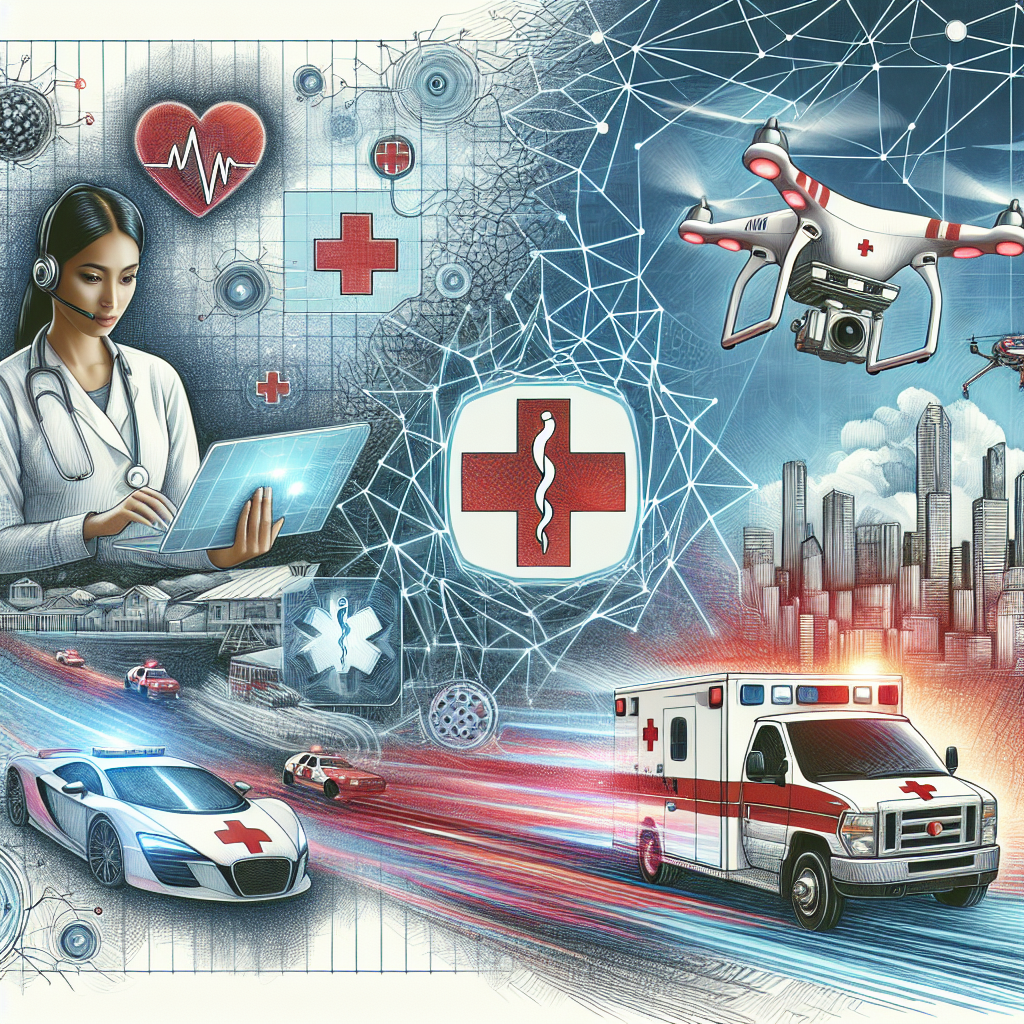In recent years, advancements in artificial intelligence (AI) technology have revolutionized various industries, including emergency response. AI solutions have the potential to greatly improve the efficiency and effectiveness of emergency response efforts, ultimately saving more lives and reducing the impact of disasters.
One of the key ways in which AI can enhance emergency response is through the use of predictive analytics. By analyzing vast amounts of historical data, AI algorithms can identify patterns and trends that can help predict when and where emergencies are likely to occur. This can be particularly useful for natural disasters such as earthquakes, hurricanes, and wildfires, as well as for man-made disasters such as terrorist attacks or industrial accidents.
For example, AI-powered systems can analyze data from sensors, satellites, social media, and other sources to detect early warning signs of a potential disaster. This information can then be used to alert emergency responders and the public, allowing them to take proactive measures to mitigate the impact of the disaster. In some cases, AI can even predict the likelihood of certain types of emergencies occurring in a specific area, enabling authorities to allocate resources more effectively and plan for potential scenarios in advance.
Another important application of AI in emergency response is in the field of image recognition and analysis. AI algorithms can be trained to quickly analyze images and videos captured by drones, surveillance cameras, or other sources to identify potential hazards, assess damage, and locate individuals in need of help. This can significantly speed up the response time of emergency services, enabling them to deploy resources more efficiently and effectively.
Furthermore, AI-powered chatbots and virtual assistants can be used to provide real-time information and support to individuals in emergency situations. These chatbots can answer common questions, provide guidance on how to stay safe, and connect individuals with emergency services or other resources. This can be particularly useful in situations where individuals may be unable to reach a human operator or are in need of immediate assistance.
Overall, the integration of AI solutions into emergency response systems has the potential to transform the way we prepare for and respond to emergencies. By harnessing the power of AI to analyze data, predict potential disasters, and provide real-time support to individuals in need, emergency responders can work more efficiently, save more lives, and minimize the impact of disasters on communities.
Frequently Asked Questions (FAQs):
Q: How can AI help improve emergency response times?
A: AI can help improve emergency response times by analyzing data from various sources to predict when and where emergencies are likely to occur. This information can help emergency responders allocate resources more effectively and plan for potential scenarios in advance, ultimately reducing response times and saving more lives.
Q: What are some examples of AI applications in emergency response?
A: Some examples of AI applications in emergency response include predictive analytics for disaster detection, image recognition and analysis for assessing damage and locating individuals in need of help, and chatbots for providing real-time information and support to individuals in emergency situations.
Q: Are there any ethical concerns associated with using AI in emergency response?
A: There are some ethical concerns associated with using AI in emergency response, such as issues related to data privacy, bias in AI algorithms, and the potential for AI systems to make errors or misinterpret information. It is important for organizations to address these concerns and ensure that AI solutions are used responsibly and ethically in emergency response efforts.
Q: How can organizations implement AI solutions in their emergency response systems?
A: Organizations can implement AI solutions in their emergency response systems by partnering with technology providers who specialize in AI for emergency response, conducting pilot projects to test the effectiveness of AI solutions, and training staff on how to use AI tools effectively in emergency situations. It is also important for organizations to regularly evaluate and update their AI systems to ensure they are meeting the needs of emergency responders and the public.
In conclusion, AI solutions have the potential to greatly improve emergency response efforts by predicting disasters, analyzing images and videos, and providing real-time support to individuals in need. By harnessing the power of AI technology, emergency responders can work more efficiently, save more lives, and minimize the impact of disasters on communities. It is important for organizations to continue exploring and implementing AI solutions in their emergency response systems to ensure they are prepared to handle emergencies effectively in the future.

